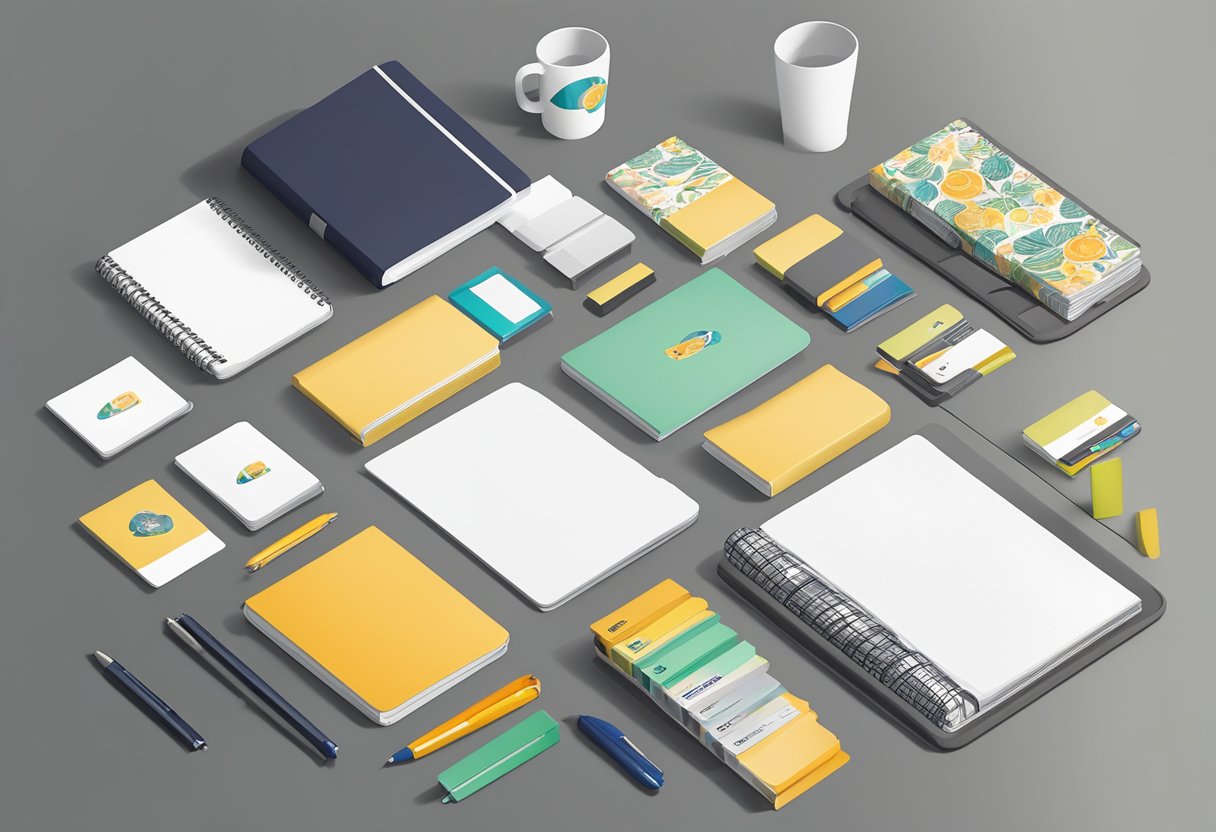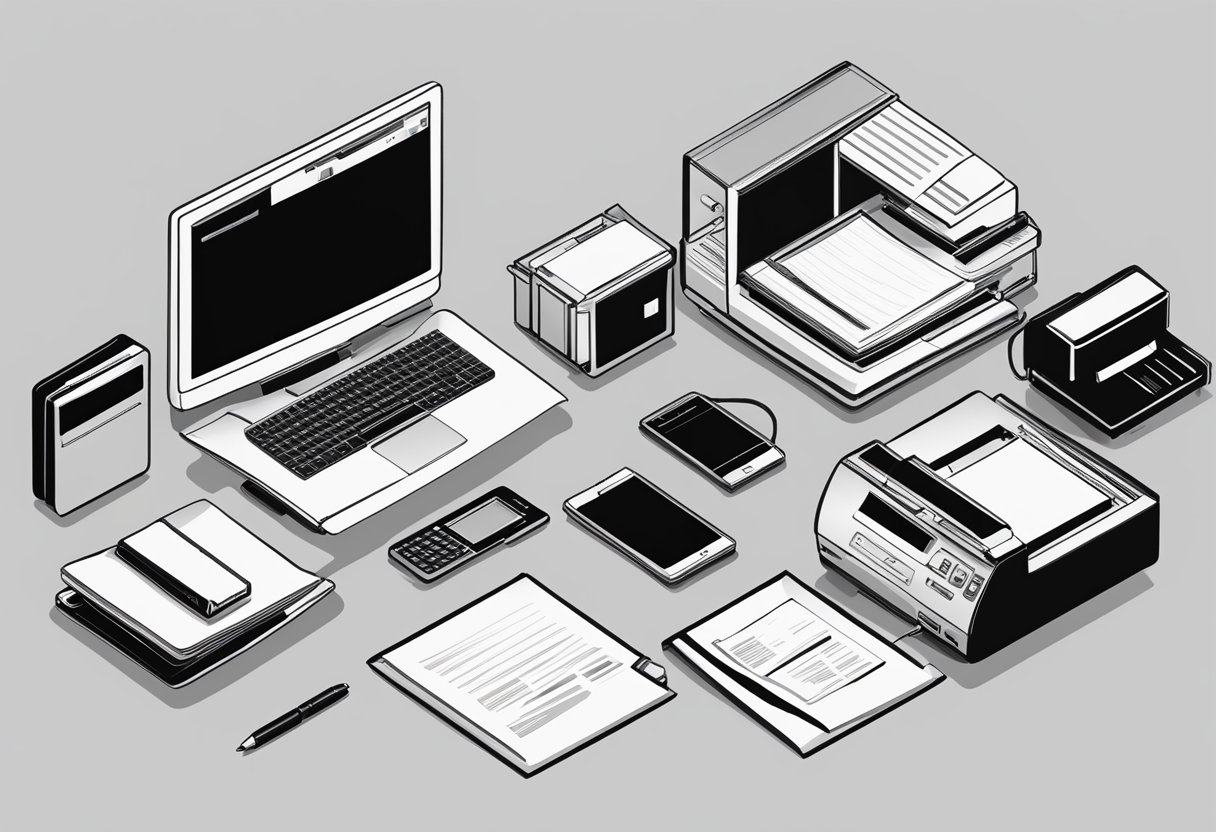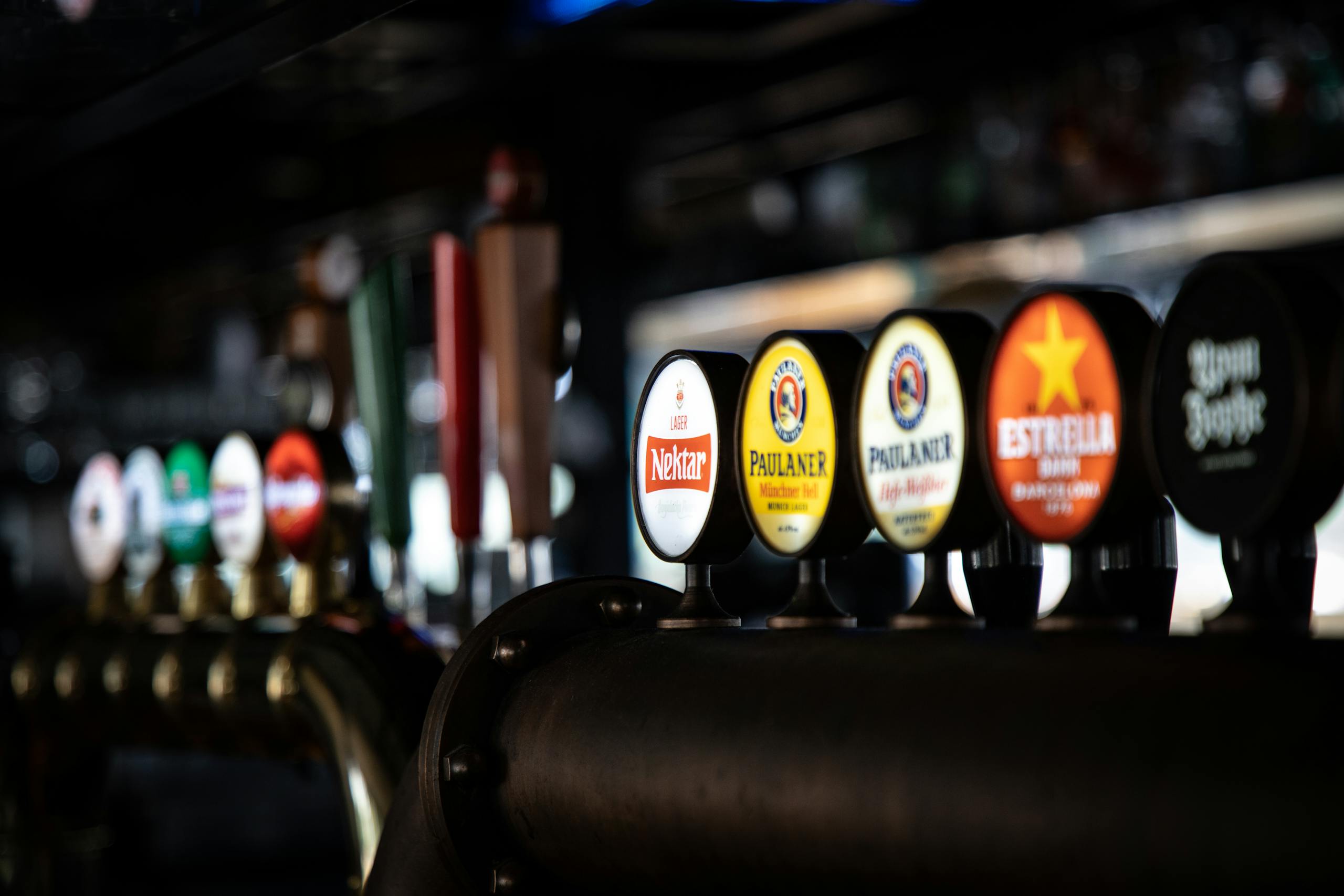When it comes to building a brand, one of the most effective ways to market your business is by putting your logo on various items. Your logo is more than just a visual; it represents your brand and helps you connect with potential customers.
From business cards to social media, placing your logo strategically can boost recognition and create lasting impressions.

Consider starting with simple items like business cards and stationery. This not only makes your communication look professional but also keeps your brand front and center with every interaction.
Customizing apparel such as T-shirts, hats, and hoodies can turn your customers into walking billboards, spreading your brand through word-of-mouth and everyday visibility.
Expanding your reach online is crucial too. Adding your logo to social media profiles helps you connect with your target audience, reinforcing your brand each time they visit your page.
Understanding Logo Design and Branding
Creating an effective logo means understanding its design and its role in establishing your brand. Recognizing how a logo contributes to brand awareness can elevate your business identity.
The Essentials of Effective Logo Design
A strong logo should be simple, memorable, and versatile. Simplicity ensures it can be easily recognized and remembered. Think of logos like Apple or Nike; they are minimal but distinct.
Memorability allows the logo to stand out in people’s minds. Your logo should leave a lasting impression, even with a quick glance.
Versatility means the logo should look good in various sizes and formats, whether on a business card or a billboard. This flexibility ensures consistent branding across different mediums.
The Role of Your Logo in Branding
Your logo is often the first thing people see and remember about your brand. It should reflect your brand’s values and mission. It acts as a visual representation that aligns with your company’s ethos.
Incorporating your brand’s color palette and font styles helps create a cohesive look. The colors and fonts should evoke the desired emotions and perceptions of your brand.
A good logo also works in harmony with other branding elements like taglines and images, fostering a strong brand identity and recognition among your audience.
Building Brand Awareness with Your Logo
Consistent use of your logo on various items can boost brand awareness. This includes placing your logo on products, advertising material, and digital platforms.
Events and sponsorships are also great opportunities to showcase your logo. Ensuring your logo is prominently featured can help your brand reach more people.
In digital spaces, your logo should be on your website, social media profiles, and email signatures. Everywhere your brand appears, your logo should too, creating a familiar and trusted presence.
Logo Placement Strategies
Correct logo placement is crucial for brand recognition. Strategically positioning your logo ensures that it enhances visibility and leaves a strong impression.
Determining Placement for Maximum Impact
Where you place your logo can significantly affect how your brand is perceived.
For websites, placing your logo in the top left-hand corner is often the best option. This is because people naturally look there first.
For brochures, position your logo prominently on the front page, ideally on the front fold. This makes it the first thing the reader sees.
On social media profiles, use the logo as your profile picture for consistent branding.
In email signatures, placing your logo near your name and title can make your message look professional and reinforce brand identity. If using it as a watermark, ensure it is subtle but visible across various formats.
Margin Space Considerations for Logo Placement
Margin space around your logo is essential. Ensure there is enough clear space to avoid clutter and maintain readability.
As a rule of thumb, the margin space above and below your logo should be at least half the logo’s height.
The space on the sides should be half the logo’s width.
When placing your logo near text or images, ensure the margin space is equal to the logo’s height. This prevents other elements from crowding your logo, ensuring it remains prominent.
Pay attention to how the logo’s size and margin space will adapt across different platforms and mediums to ensure consistency in branding.
Material Selection for Logo Embellishment

When deciding where to put your logo, the choice of materials and methods is essential. The material will affect the durability and appearance of the final product, while the embellishment method can showcase your logo in various ways.
Choosing the Right Materials for Durability
To ensure that your logo lasts, selecting the right materials is crucial.
Clothing items like t-shirts, shirts, and hoodies made from high-quality fabrics can withstand wear and tear.
Cotton and polyester blends are popular for their strength and comfort.
For hats and uniforms, sturdy fabrics like canvas and twill provide a durable base for logos.
These materials resist fraying and maintain their shape, keeping your logo looking fresh over time. Evaluate the demands of the item’s use to select the best material for durability.
Embroidery, Screen Printing, and Transfers
Embroidery is a classic option that adds a professional touch to clothing. It involves stitching the logo with thread, creating a textured, three-dimensional effect. This method works well on uniforms, hats, and hoodies due to its durability.
Screen printing is another popular choice, ideal for t-shirts and shirts. This method applies ink directly onto the fabric, allowing for vibrant colors and detailed designs. It is cost-effective for large batches and holds up well with repeated washing.
Transfers offer flexibility, using heat to apply the logo onto the material. This method is suitable for various items, from clothing to hoodies, and allows for intricate designs with multiple colors. It is quick and convenient but may not be as durable as embroidery or screen printing.
Promotional Products and Corporate Swag
Promotional products like branded merch can make your business more memorable. Items such as mugs and tote bags not only display your logo but also add value to the recipients.
Selecting Promotional Items That Reflect Your Brand
Choosing the right promo products is key.
Think about your audience and what they will use. For example, if your clients are office workers, branded notebooks and pens are useful. Mugs and water bottles work well for everyday use. Bags like tote bags and backpacks can be handy for anyone.
Quality matters. Poor-quality items can hurt your brand.
Use colors and designs that align with your company’s image to reinforce your brand’s message.
The Advantage of Using Branded Merch in Promotions
Branded merch offers many benefits.
They help increase brand awareness. When people use items with your logo, others see your brand too. This kind of exposure is valuable.
Promo products can also build customer loyalty. Giving clients useful items shows you value them.
Items like custom mugs or bags can keep your brand in their daily routines.
They are also great for events like trade shows.
Swag bags filled with branded items can attract attention and keep your company top-of-mind. You can even sell merch online for extra revenue.
Printed Materials and Stationery

Printing your logo on stationery and other printed materials such as business cards and letterheads plays a critical role in brand visibility. It’s important to keep your design consistent across items to make a professional impression.
Business Cards and Letterheads
Business cards are often your first point of contact with potential clients.
Use high-quality cardstock to ensure durability.
Ensure your logo is prominently featured, along with essential contact details. Embossing or foil stamping your logo can add a premium touch.
Letterheads are just as important. They set the tone for your correspondence.
Place your logo at the top, accompanied by the company’s contact information. High-quality paper can make a huge difference in presentation. A well-designed letterhead adds credibility to your documents.
Brochures, Notecards, and Envelopes
Brochures can be a powerful marketing tool. Include your logo visibly on the front cover. Consistent use of color schemes and fonts will further reinforce your brand identity.
Ensure the inside content is well-organized and easy to read, which makes a professional impression.
Notecards and envelopes are perfect for personalized communication.
Printing your logo on notecards can create a personable yet professional touch.
Envelopes should have your logo on the upper left corner or on the back flap. Consistency in color and design makes your brand easily identifiable.
Customizing Office Supplies
Custom-branded office supplies can further boost your brand’s visibility. Consider printing your logo on notebooks, rubber stamps, and even sticky notes. These items see frequent use and can keep your brand in the mind of those who use them.
Branded notebooks make great giveaways at events. Rubber stamps with your logo can simplify processes that require your company’s seal. Sticky notes are another subtle yet effective way to keep your brand in everyone’s sight.
Having a consistent and professional design across these items enhances your brand’s presence in everyday office activities.
Digital Assets and Online Presence

Using your logo effectively in digital assets is crucial in building a strong online presence. It helps maintain a cohesive brand image and increases recognition among your audience.
Incorporating Logos into Your Website and Social Media
Your website’s header is a prime location for your logo. Place it on the top left corner where visitors expect to see it. This makes your brand instantly recognizable.
Additionally, using a favicon, a small icon in the browser tab, helps in promoting your brand identity.
On social media channels, your logo should be your profile picture. This ensures that your content is easily identifiable.
Make sure to use a high-resolution image that looks clear and professional. Platforms like LinkedIn, Facebook, and Instagram accept PNG and JPG files.
For stories and posts, incorporate your logo subtly in images and videos to keep branding consistent without overwhelming the visual content.
Creative Use of Logos in Digital Marketing
Email signatures offer another opportunity to showcase your logo. Adding your logo to your email signature can make your emails look more professional and reinforce your brand with each communication.
In digital ads, use your logo in a strategic way. Whether it’s a banner ad, social media ad, or video ad, your logo should be part of the visual elements.
Leverage tools like Wix to seamlessly integrate your logo into your online store or portfolio. By consistently placing your logo across various digital platforms, you create a unified brand presence that customers recognize and trust.
Unique Applications of Logos

Utilizing your logo in creative ways can enhance brand visibility and create a memorable experience for your audience. These applications can range from fun and temporary to practical and long-lasting.
Temporary Tattoos and Stickers
Temporary tattoos and stickers are exciting ways to promote your brand.
Having your logo on temporary tattoos lets people wear your brand proudly at events, festivals, or just for fun. They are easy to apply and remove, making them a popular choice.
Stickers are versatile and can be placed on laptops, water bottles, notebooks, and more. They allow your brand to travel and gain exposure in various environments.
Ensure you use high-quality materials to make them durable and visually appealing.
Custom Labels and Packaging
Logos on custom labels and packaging make your product look professional and polished.
Labels can be used on jars, bottles, and other containers to provide essential information while showcasing your brand. This is especially useful for small businesses and startups aiming to create a strong brand identity.
Effective packaging with your logo printed on boxes, bags, or wrapping paper enhances the unboxing experience for your customers. The combination of visual appeal and practicality can significantly boost your brand image and customer satisfaction.
Logo Usage on Vehicles and Signage
Putting your logo on vehicles and signage can transform any ordinary space into a moving advertisement.
Vehicle wraps or decals can turn your company car, truck, or van into a mobile billboard, reaching a wider audience on the road.
Signs with your logo can be installed outside your business premises, at trade shows, or in public places. They attract attention and help in establishing a strong presence in your location.
Using clear, legible designs ensures that your logo is easily recognizable from a distance.
Logistics of Logo Application in Merchandise
When it comes to putting your logo on merchandise, you can choose between using print-on-demand services and handling bulk orders. Each method has its own logistics to consider.
Working with Print-on-Demand Services
Print-on-demand (POD) services offer flexibility and ease for businesses, especially for smaller operations or startups.
With POD, you don’t need to worry about holding inventory or meeting minimum order requirements. You only pay for what you sell.
You can upload your logo in common file types like EPS or PNG to ensure high quality.
Designing your product is straightforward, with many POD platforms offering user-friendly online design tools.
Pros include no upfront costs and reduced risk of unsold inventory. On the other hand, cons can include higher per-unit cost and potential longer shipping times due to production upon order.
Bulk Orders and Inventory Management
Bulk orders require more upfront investment but can be cost-effective for larger quantities. You often get a lower per-unit price, which can improve your margins.
Managing a physical inventory involves warehousing, which could incur extra costs. You must also manage storage, shipping logistics, and stock levels.
It’s critical to ensure your logo files are high quality and ready for various products.
Consider using software to help with inventory management. Balancing cost and inventory risks is key. Proper planning and resource allocation can lead to successful merchandise campaigns.
Corporate Documentation and Communication

Your logo plays a crucial role in establishing brand identity within your corporate documents and communication materials. These materials serve as touchpoints between your business and its stakeholders, making consistent logo usage essential.
Integrating Logos in Official Documents
Your logo should be prominently featured on official documents like letterheads, invoices, and business cards. Using your logo on these materials helps convey professionalism and trust.
For example, letterheads are often the first impression a recipient has of your company. Position your logo at the top to ensure it’s seen immediately. This not only creates a professional look but also reinforces your brand identity.
Meanwhile, invoices can be made more distinct and credible by incorporating your logo. Place it alongside your company name and contact information to emphasize authenticity and facilitate easy recognition.
On business cards, the logo typically occupies a prime spot, either at the top or center. This makes your card memorable and aligns with your corporate identity.
Additionally, consider using the logo on other office supplies such as notepads and folders to maintain a consistent brand image within the office environment.
Logo Presence in Corporate Presentations
Incorporating your logo in corporate presentations is vital for brand consistency.
In presentations, the logo usually appears on the title slide, footer, or watermark of every slide.
A logo on the title slide sets the tone for the entire presentation, immediately establishing your brand’s presence.
Consistent use of the logo throughout the slides enhances brand recognition and keeps your audience engaged with your brand.
Meanwhile, a logo in the slide’s footer ensures that each slide is branded without overshadowing the content. This subtle reinforcement keeps the focus on the message while ensuring your brand remains visible.
Using the logo as a watermark can add a professional touch. Make sure it’s transparent and placed in a way that it doesn’t distract from the presentation content. This keeps your brand in sight without overwhelming the viewer.
Effective Use of Logo in Retail Spaces

Using your logo effectively in retail spaces can create a lasting impression and strengthen brand identity. Strategic logo placement can enhance your store’s visual appeal and increase customer recognition.
Showcasing Logos in Physical Stores
To make your logo stand out, display it prominently throughout the store.
For example, use custom-printed signs at entrances and exits. Label shelves and product sections with logo-embedded tags for easy navigation.
Additionally, use logo-printed shopping bags, product tags, and packaging. Such branding reinforces your identity and ensures customers remember your brand after they leave.
Employee uniforms can also feature the logo, creating a cohesive and professional appearance.
Digital screens displaying your logo and promotions add a tech-savvy touch and can attract customers’ attention. This integration helps in building brand loyalty and consistency.
Logo Interaction with Customers
Engage customers by incorporating your logo into interactive experiences.
For instance, offer branded loyalty cards and discount vouchers, which they can use repeatedly, keeping your logo in their wallets. Create photo opportunities with logo-branded backdrops or props.
Use QR codes with logos on product labels that direct customers to online content when scanned. Place your logo on any freebies or samples given to visitors to increase brand recall.
Lastly, logos on receipts and invoices ensure the last thing customers see before leaving is your brand, reinforcing your message one more time.
Frequently Asked Questions

Discover the essentials of branding items with your company logo. Learn about unique items, visualization tools, effective products, specialized companies, selection factors, and cost-effective methods.
What are unique items that can be branded with a company logo for promotional purposes?
You can brand various items such as custom socks, laptop sleeves, reusable straws, and phone ring holders. These unique items grab attention and make your brand memorable.
How can I visualize my logo on various products virtually before making a purchase?
You can use online tools like Canva, VistaPrint, or specialized promotional product websites.
These platforms often offer features where you can upload your logo and see how it looks on different products.
What are the best products to choose for displaying a company logo effectively?
T-shirts, tote bags, water bottles, and pens are classic choices. These items provide good visibility and are practical, ensuring that people use them frequently, which increases your brand exposure.
Which companies specialize in custom branding items with a logo for businesses?
Companies like Custom Ink, Vistaprint, and 4imprint are well-known for providing custom branding services. They offer a wide range of products and can help you design and print your logo on various items.
What factors should be considered when selecting items for small business promotional branding?
Consider your target audience, the usability of the item, and your budget. Choose items that are relevant to your audience and offer practical value. Additionally, high-quality materials ensure a good impression.
Are there any cost-effective ways to place my logo on a wide range of items?
Bulk ordering often reduces the cost per item. Using simpler designs and choosing fewer colors can lower printing costs. Many online services offer discounts for large quantities or during promotional periods.



